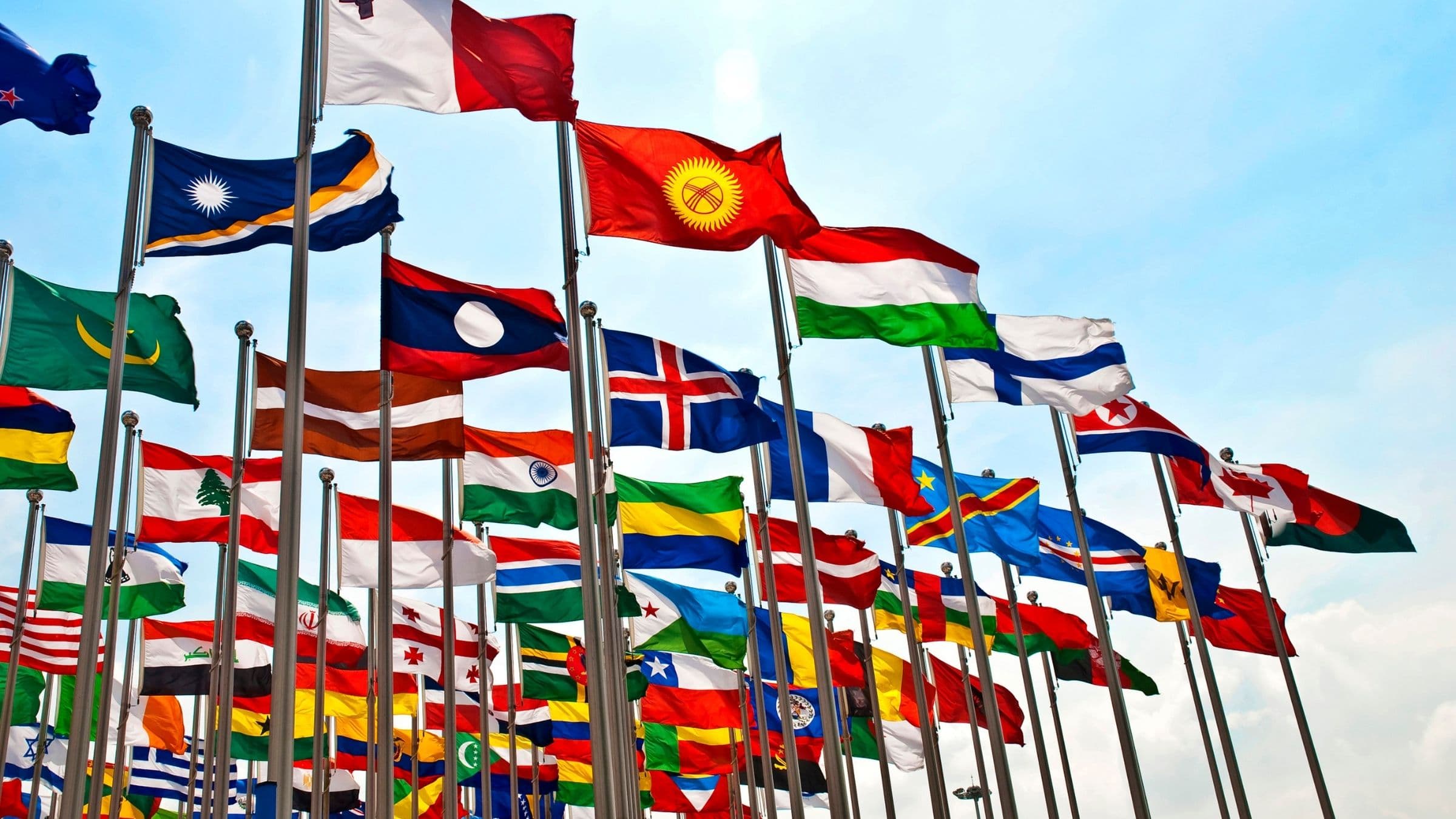
COUNTRY PROFILE
Discover more about the Ethiopia market. Events, resources, and more are linked throughout the profile.

$101.7 million
total U.S. processed food exports to Ethiopia in 2023

1st
in the Sub-Saharan African region for U.S. processed food exports

116.4 million
total population in 2023
The U.S. Foreign Commercial Service reports that Ethiopia has a large domestic market with a total population of about 116.4 million people (CIA World Factbook Est. 2023), making it the second most populous country in Africa after Nigeria. After an intense period of COVID-19 pandemic and a prolonged and devastating civil conflict, the Ethiopian macro economy is finding itself in a difficult war-time footing, facing immense humanitarian and security costs, as well as a heavy toll in terms of lost social and physical infrastructure. Heading into 2024, however, conditions appear to be emerging for the economy to possibly move away from a conflict mode and towards recovery and reconstruction.
Over the 15 years until 2019, Ethiopia’s economy had been amongst the fastest growing in the world at an average of 9.5 % per year. Among other factors, growth was led by capital accumulation, particularly through public infrastructure investments. Ethiopia’s real gross domestic product (GDP) growth slowed down to 6.3% in FY2020/21 compared to the previous year’s historic growth due to COVID-19, with growth in industry and services easing to single digits. However, agriculture was not significantly affected by the pandemic according to the World Bank. According to Euromonitor as fighting in the civil war has ceased, annual real GDP is expected to post growth of 6.1% in 2023 as well as 6.1% in 2024, outperforming the Sub-Saharan African average of 3.6% in both 2023 and 2024. Over the longer term, the economy is expected to benefit from a recovery in tourism and a liberalized telecommunications sector.
The vast majority of Ethiopia’s imports come from Asia (61.3%) followed by Europe (22%), the Americas (7.6%) of which the U.S. accounts for a large share (3.4%), and other countries in Africa (8.9%). Imports from China accounted for 22.8% of Ethiopia’s total foreign supplies. U.S. exports to Ethiopia are primarily aircraft sales, construction equipment, agricultural machinery, farming, and engineering services. Aircraft and aviation parts represented a majority of total U.S. exports to Ethiopia. Many U.S. companies based in the United Arab Emirates (UAE) conduct business in Ethiopia using Dubai as an intermediary export platform due to proximity and availability of reliable air shipping and air services.
Among the most often reported obstacles to doing business in Ethiopia are a lack of transparency in the government procurement system, including canceled tenders, as well as poor infrastructure, bureaucratic procedures, lack of coordination, inefficiency in government agencies and systems, a foreign exchange shortage, and high transportation and transaction costs. Importers face difficulty in obtaining foreign exchange, particularly those that import goods for domestic sale.
The National Bank of Ethiopia (NBE) administers a strict foreign currency regulatory regime. While larger firms, state-owned enterprises, and manufacturing industries have not faced major problems in obtaining foreign exchange, the remaining firms face burdensome delays in arranging trade-related payments. An importer must apply for an import permit and obtain a letter of credit for the total value of the imports before an order can be placed.
Revenue generation, not protection of local industry, appears to be the primary purpose of Ethiopia’s tariffs. Goods imported from the Common Market for Eastern and Southern Africa (COMESA) members are granted a 0% to 10% tariff preference, (depending on the type of goods) under the Free Trade Agreement (FTA). Tripartite FTA membership among COMESA, the South African Development Community (SADC), and the East African Community (EAC) members will allow zero tariffs and duties, which will impact Ethiopian trade when it completes the COMESA accession process (timeline for completion is unclear).
Customs duties are payable on imports by all persons and entities that have no duty-free privileges. In 2019 Ethiopian customs ceased its policy of reducing, or eliminating, customs duties on imports of knocked-down and semi knocked-down industrial inputs. This new revision has reclassified these products to be treated with basic tariff rates. Ethiopia aspires to be a leading manufacturing hub in Africa by 2025. Accordingly, the Government of Ethiopia (GOE) prioritizes industrial park development and expansion. The GOE offers duty-free import incentives for investors in certain sectors, especially for those located in the industrial zone and planning to export goods and generate foreign currency.
U.S. processed food exports to Ethiopia reached US$83.8 million in 2022, ranking it second after South Africa in Sub-Saharan Africa. That represented growth of 62% from the prior year and a new all-time high. Year to date (YTD) November of 2023 U.S. processed food exports to Ethiopia grew an astonishing 57% to a new record high of US$101.7 million and a top ranking in the Sub-Saharan African region.
Top U.S. processed food exports to Ethiopia in 2023 included:

$6 billion
retail sales of packaged food in Ethiopia in 2023

149.9%
growth in retail sales of packaged food since 2019

$16.4 billion
projected retail sales of packaged food in Ethiopia by 2028
According to Euromonitor retail sales of packaged food in Ethiopia is forecast to reach just over US$6 billion in 2023. That represents growth of 149.9% and a U.S. dollar equivalent of US$3.6 billion from 2019. By 2028 Euromonitor forecasts that retail sales of packaged food in Ethiopia will reach US$16.4 billion. This represents growth of 113.2% and a US dollar equivalent of US$8.7 billion from 2024.
High growth products in the forecast include:
Euromonitor reports that soaring inflation, due to the continuing civil war, as well as price pressures arising from the war in Ukraine, led to consumers cutting down on discretionary spending. On top of inflation, drought further aggravated supply chain disruptions. Within this context, trading conditions for retailers were difficult in 2022. Over the forecast period, the outlook is more positive. Ethiopia’s ambitious economic reform plan should bolster growth, including in terms e-commerce.
Leading grocery retailers in Ethiopia include Shoa (Shoa Trading Plc), Safeway (Albertsons Cos Inc), All Mart (All-Mart Plc) and Fresh Corner (Luna Corp). According to Euromonitor about 94% of grocery retailing is done by independent grocers, especially outside of the metropolitan areas. Most distribution in Ethiopia, particularly to regional towns, is conducted through informal business arrangements. For example, after being cleared through customs, many goods will be sold to wholesalers in Addis Ababa’s (and Africa’s) largest open market (Merkato) and then distributed to retailers and small vendors.
Some mid- to high-income consumers in Addis Ababa and other big cities are increasingly choosing to shop from modern grocery retailers. With brightly lit and spacious aisles displaying well-organized assortments, supermarkets provide a much more comfortable and convenient shopping experience than open markets, where crowds and spatial constraints limit the potential for browsing and where goods are often damaged during handling.
Moreover, supermarkets tend to carry higher quality products that are difficult to find elsewhere, including imported brands. However, a challenge in shopping at supermarkets is the inconsistent availability of imported brands. Nonetheless, modern grocery retailers pose a growing threat to traditional grocery retailers. As a response to the competition, traditional grocery retailers in urban areas are adopting more competitive pricing strategies and working to develop closer relationships with regular customers. Some have also started to focus more on offering products that are not commonly found or relatively expensive in supermarkets, or moved their outlets closer to residential areas to strengthen the advantage they enjoy in terms of accessibility.
Ethiopia requires that all imports be channeled through Ethiopian nationals registered with the Ministry of Trade and Industry (MOTI) as official importers or distribution agents. The importer or agent is required to apply for an import license and register with the MOTI as well as the National Bank of Ethiopia (NBE) for a foreign exchange permit.
Access to foreign exchange is the leading obstacle faced by Ethiopian importers seeking to source goods and services from the international market. Importers often wait for months to open a letter of credit for imports and receive an allocation of U.S. dollars due to an acute scarcity of foreign exchange. Companies working in “prioritized” sectors, including manufacturing, agro-processing, and pharmaceuticals, may receive preferential access to foreign currency.
